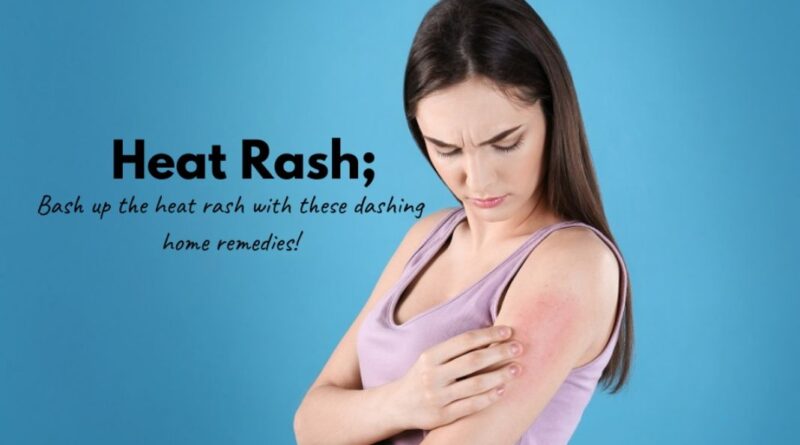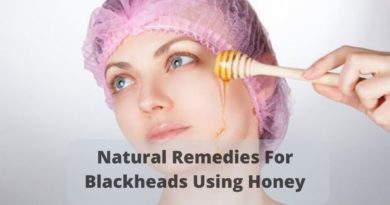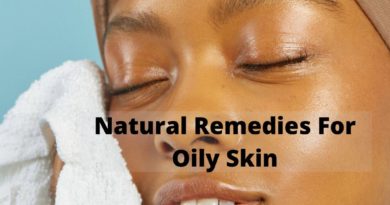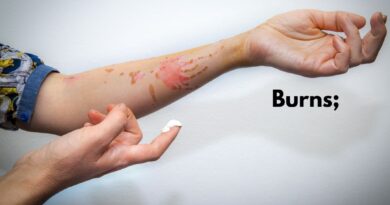Heat Rash? Cool It with Natural Remedies
When temperatures rise in the summer, heat rashes can appear. This is a common condition that is also known as prickly heat or miliaria. The symptoms are itchy, prickly sensation with small red spots on the skin, sometimes accompanied by mild swelling.
It’s when you sweat a great deal in hot and humid weather that heat rash can occur. Sweat glands get blocked, which leads to a rash. Often, this appears on parts of the body with skin folds, such as the neck, the abdomen or the armpits.
Babies can also get heat rash. Their skin is more delicate, and their sweat glands are smaller and not yet fully developed. They are also unable to bring down their body temperature in the way older children and adults can. Baby heat rash can be easily observed, and simple steps can be taken to make it clear up.
In many cases, heat rash goes away on its own when the skin cools. While it lasts, though, it can be uncomfortable and sometimes painful. It can even lead to infection if bacteria affect the sweat glands, causing inflamed and itchy pustules. Fortunately, there are several effective ways to combat heat rash (1).
Table of Contents
What to Do When You Have a Heat Rash
The best thing to do is to prevent heat rash from taking hold in the first place. Wearing natural, loose clothing and taking steps to avoid exposure to intense heat will help.
If possible, you should stay out of the sun, especially when it comes to activities that cause you to sweat. For example, when it is very humid, any form of sports could lead to this problem. Once you have heat rash, however, there are steps you can take to get relief.
At home, you can bathe with cold water and then let your skin dry by itself instead of toweling the water off. You could also use calamine lotion or cold compresses, which will calm itchy and sore skin.
That, simply put, is how to cure heat rash. The above steps allow the skin to cool off, and very often, this will lead to a relief of bothersome symptoms and a subsequent clearing up of heat rash (2)
How to Treat Heat Rash at Home
- Essential Oils
- Supplements
- Foods
- Home Remedies
Heat rash is one of those conditions that can feel very troublesome. Fortunately, there are many natural and soothing remedies available to use for heat rash. Many of these are wholesome and natural. Chances are, they are to be found on your shelves at home.
It’s important to stay cool. Leave the areas of your body affected by heat rash uncovered and make sure they are ventilated. This means switching on ceiling fans and using an air-conditioner if you have one. In general, the more you can avoid sweating, the better it is.
Further, from food to supplements to essential oils, there are many ways to prevent and treat heat rash. Here are some of the most effective.
CURE 1: Essential oils for Heat Rash
1. Lavender oil
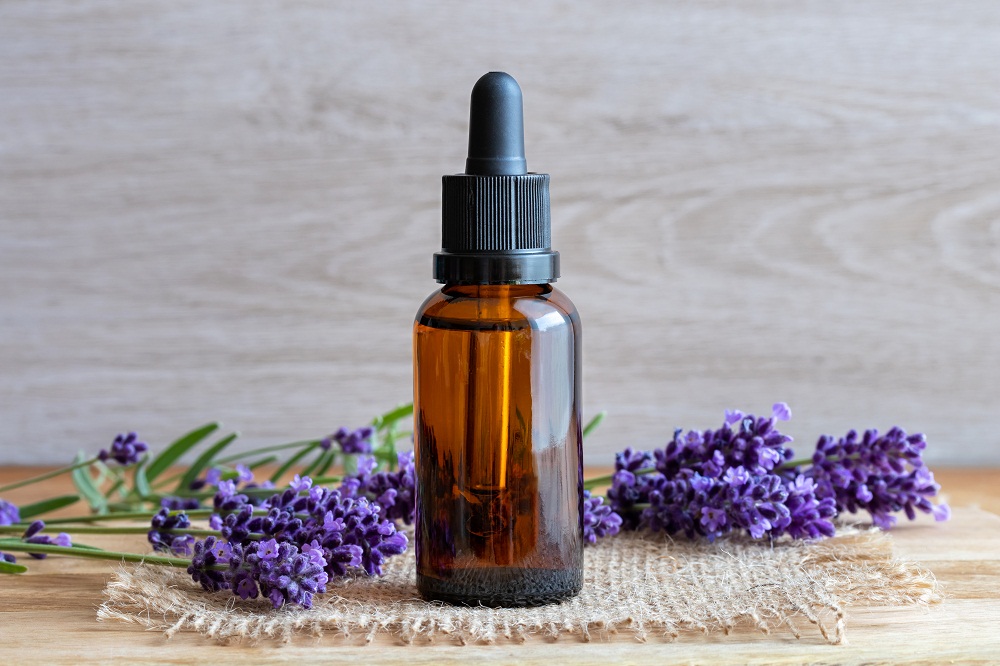
Why does it work?
Lavender is well-known for its antiseptic and anti-inflammatory properties, which soothe the skin.
How to use it?
Add lavender oil to your bath water, stir it in, and let it stand for a few minutes before having a bath.
How much to use?
Four to five drops should be sufficient.
2. Eucalyptus oil
Why does it work?
Research indicates that eucalyptus has analgesic and antimicrobial properties. This soothes and heals the skin.
How to use it?
Add eucalyptus oil to your bath water, stir it in, and let it stand for a few minutes before having a bath.
How much to use?
Four to five drops should be sufficient to treat heat rash.
3. Peppermint oil
Why does it work?
Peppermint oil provides relief from itching, and there are indications that it can be antibacterial, too.
How to use it?
Add peppermint oil to your bathwater, stir it in, and let it stand for a few minutes before having a bath.
How much to use?
Four to five drops should be sufficient.
4. Chamomile Oil
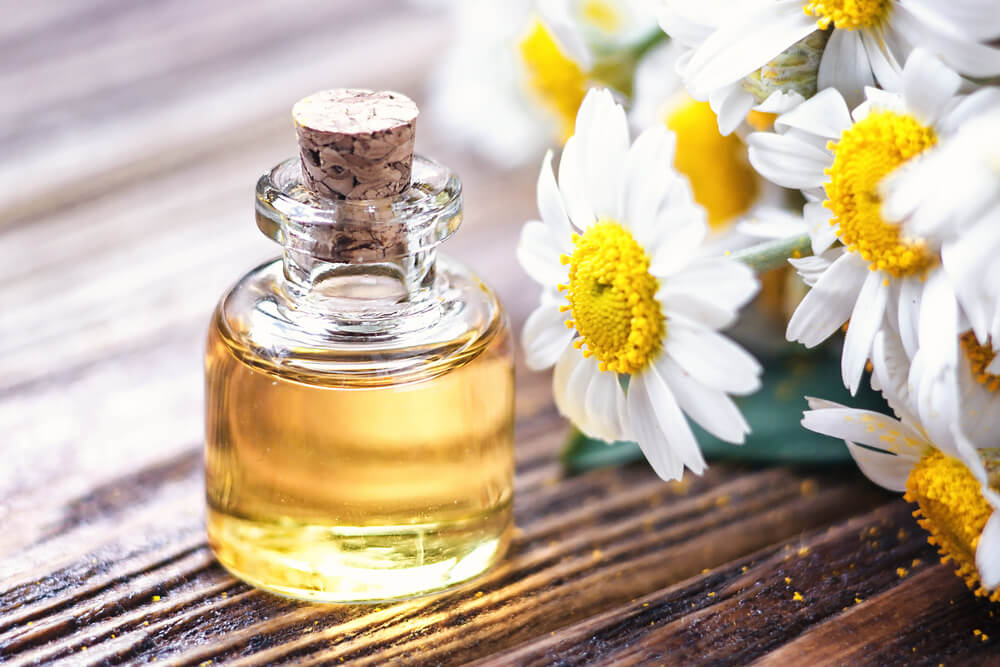
Why does it work?
Chamomile oil is believed to have antifungal and antibacterial properties. Thus, it can soothe the skin and prevent heat rashes from worsening.
How to use it?
Add chamomile oil to your bathwater, stir it in, and let it stand for a few minutes before having a bath.
How much to use?
Four to five drops should be sufficient for heat rash relief and it is good for treating heat rash.
CURE 2: Supplements
1. Vitamins C and E
Why does it work?
A study shows that doses of Vitamin C and E can help prevent damage from prolonged exposure to the sun. Hence, it’s a good preventative step.
How to use it?
Take recommended doses in capsule form at least ten days before such exposure.
How much to use?
As vitamins come in various concentrations, the amount mentioned by your medical practitioner or on the pack should be strictly followed.
2. Vitamin B6
Why does it work?
Vitamin B6 is good for heat rash and your immune system. This also helps you fight infection or inflammation caused by excessive sun exposure.
How to use it?
Take recommended doses in capsule form, if your diet isn’t providing enough of B6.
How much to use?
As vitamins come in various concentrations, the amount mentioned by your medical practitioner or on the pack should be strictly followed.
CURE 3: Foods
1. Salads
Why does it work?
Fresh and light salads have healthy ingredients that ease your digestive system and cool you down.
How to use it?
There are scores of recipes. Find one with the ingredients you like and mix and match till you come up with a delicious meal of your own.
How much to use?
Salads are great, especially during hot days. You can have as much as you like, but as with all foods, it’s important not to overdo it.
2. Drinks

Why does it work?
Water and other light drinks cool down the body and replace fluids on humid days.
How to use it?
Try natural drinks such as buttermilk, lemon water, and coconut water. Limit alcohol and fizzy drinks as these can be harmful
How much to use?
Health authorities commonly recommend about two litres of water and other fluids daily.
3. Vegetables and Fruits
Why does it work?
Diet will not get rid of heat rash overnight, but it’s always good to consume the right fruit and vegetables, especially during the summers. These have health-giving properties and nutrients to promote skin health and reduce inflammation.
How to use it?
Vegetables such as beans, carrots, potatoes, and greens and fruit such as oranges, bananas, cantaloupes, and so many more are capable of hundreds of yummy combinations.
How much to use?
As with all food, over-eating will cause problems. Three meals a day is enough.
CURE 4: Home Remedies for Heat Rash
1. Coconut oil for heat rash
Why does it work?
Organic and pure coconut oil does not clog the skin and has antioxidant compounds to promote healing and soothe inflammation.
How to use it?
Apply the oil all over the areas affected. You can repeat the application several times a day.
How much to use?
You can pour a little on your palms to enable you to spread it over the rash gently.
2. Watermelon
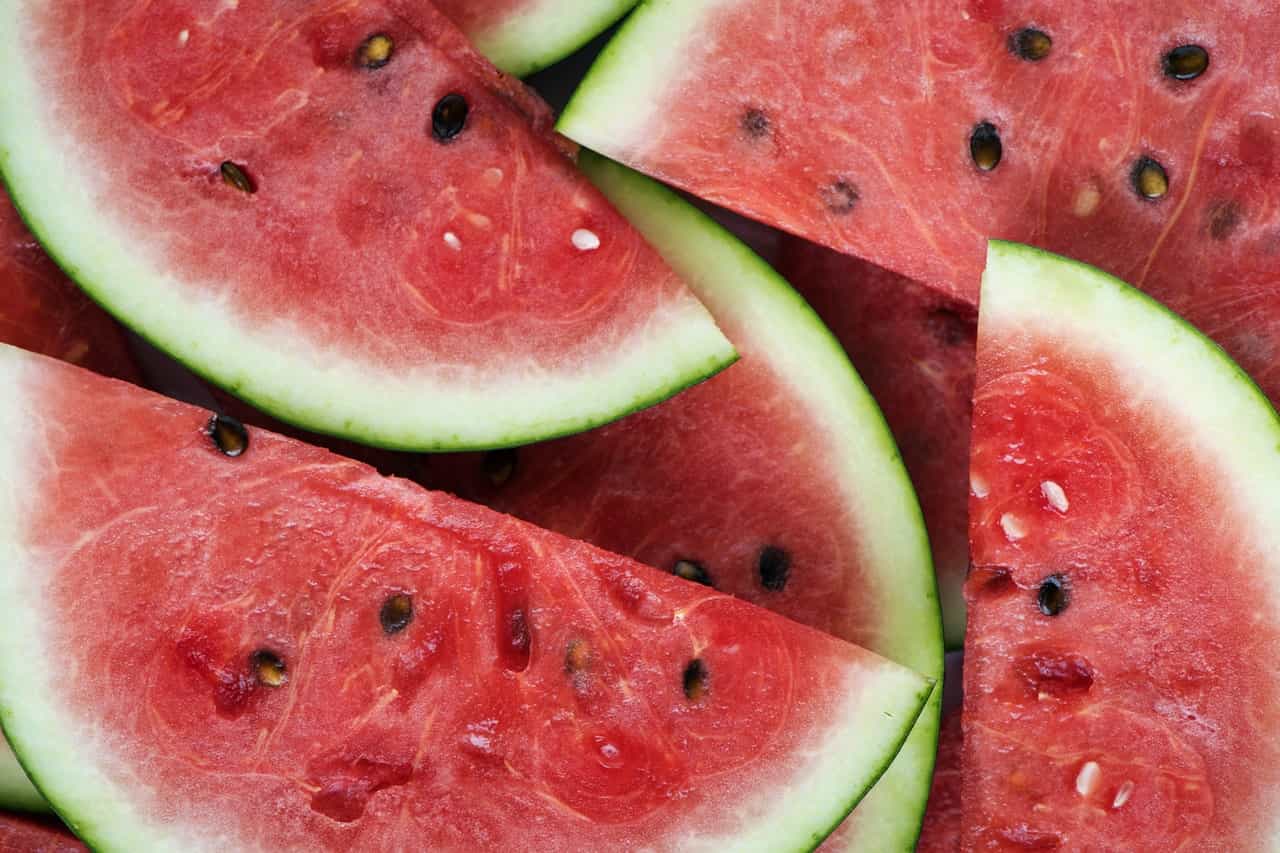
Why does it work?
Watermelon is cooling and has antioxidant properties to soothe the skin.
How to use it?
Make a pulp of some de-seeded watermelon, and apply this on the affected area for 10-15 minutes before your bath.
How much to use?
You’ll need a few slices, enough to form a pulp to spread over the affected part of the skin.
Also Read: Benefits Of Eating Watermelon To Lose Weight
3. Lime Juice
Why does it work?
Lime juice has antioxidants that can promote skin healing.
How to use it?
Squeeze the juice of fresh lime into a glass of water, add honey if you like, and drink it.
How much to use?
Three to four glasses a day.
4. Cucumber
Why does it work?
Cucumber has astringent and cooling properties that can clear skin pores.
How to use it?
You could apply cold cucumber slices on the affected area for a few minutes, or do the same with mashed cucumber paste.
How much to use?
This depends on the affected area. You should make do with one cucumber at most.
5. Aloe vera for heat rash

Why does it work?
Aloe vera has been known for ages for antiseptic and anti-inflammatory properties to nourish and heal the skin.
How to use it?
Squeeze out the gel from an aloe vera leaf and apply on the affected area. You could also purchase a pure, additive-free gel.
How much to use?
You can apply this morning and evening until heat rash relief.
6. Yogurt
Why does it work?
Yogurt cools, and skin and also has antibacterial properties.
How to use it?
Eating yogurt is an excellent way to stay cool. With prickly heat, you should apply it directly to the affected area of skin.
How much to use?
At least once a day until symptoms are better.
7. Cornstarch for heat rash
Why does it work?
Corn starch absorbs sweat to prevent pores from getting clogged. Think of it as natural talcum powder.
How to use it?
Sprinkle some on the affected area of the body.
How much to use?
You could keep applying it until relief.
8. Neem
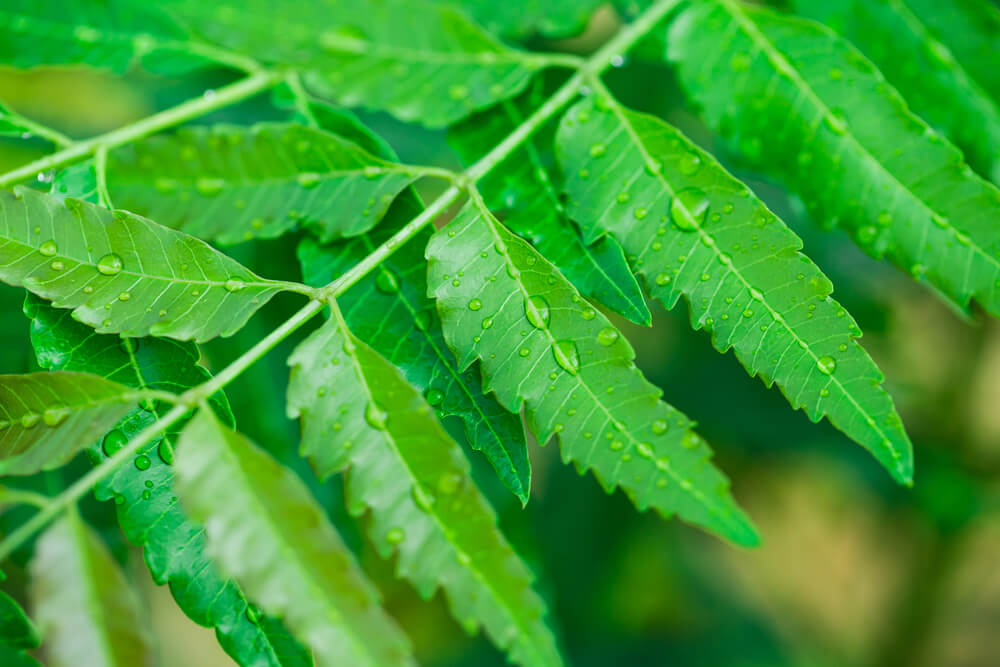
Why does it work?
Neem is a powerful antibacterial agent that heals the skin.
How to use it?
You can soak a few neem leaves in your bathing water. Or you could even make a paste by adding water, flower, and milk if need be. Spread this on your skin.
How much to use?
A few leaves or an application at least once a day.
9. Baking soda for heat rash
Why does it work?
Baking soda removes bacteria and unclogs skin pores to provide relief.
How to use it?
Add baking soda to your bath water and mix well before having a bath.
How much to use?
Half a cup in your bathwater once a day should be enough to treat heat rash.
Prevention Is Better Than Cure
With heat rash, as with other ailments, it’s best to take steps to prevent it from occurring in the first place. Diet and supplements apart, there are some simple ways of doing this.
As we’ve already pointed out, you should try and limit activities during the hottest parts of the day as much as possible. If you do need to be out in the sun, make sure you stay hydrated and return to a cooler environment as soon as you can. An activity such as swimming can also be wonderful.
It’s also important to choose the right clothing. Synthetics are not skin-friendly during humid times and can cause excessive perspiration, which leads to heat rash. Cotton clothes are best, as they are absorbent and keep you cool. Besides, looser fits and lighter colors will serve you well.
Summer can be a great time. There’s plenty to do, with long, sunshine-filled days and many vacations. By following the simple steps outlined above on how to treat heat rash, you’ll be able to enjoy the season to the fullest.
FAQ’s
1. Is heat rash a dangerous ailment?
It is a very common ailment in the hotter months and typically not dangerous. It clears up on its own in a majority of cases with the proper care. If the symptoms do not go away or get worse over time; however, it makes sense to visit a doctor just in case there is a bacterial infection.
It is also important to ensure that the rash is not due to other causes such as a viral infection, fungus, allergy or chickenpox. If this is the case, there will be other symptoms such as fever or muscle ache, to name a few.
2. How long does it take for heat rash to go away?
In most cases, heat rash should go away in three or four days. This is dependent on whether you take the right precautions to cool the skin and prevent excessive sweating. If you take the necessary steps and symptoms do not reduce, do seek medical attention.
3. Does heat rash cause itching?
A prickly, itchy feeling is the most common characteristic of heat rash, which is why it is also referred to as prickly heat. This can cause many inconveniences, especially during working hours.
Oils and coolants such as aloe vera can provide relief. Remember, it is important not to scratch the skin as far as possible. Excessive scratching of the affected area of skin can, in some cases lead to open blisters or pustular lesions, which will require medical treatment.

